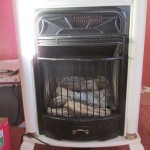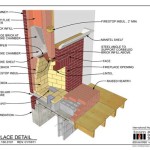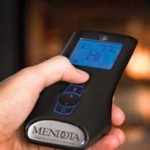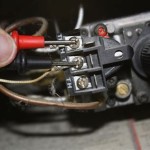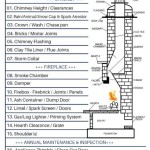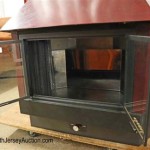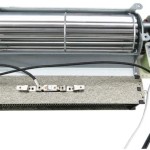Table Top Fireplaces: Ambiance and Warmth Without the Commitment
Table top fireplaces have emerged as a popular home decor accessory, offering the visual appeal and comforting warmth of a traditional fireplace without the need for extensive construction, venting, or permanent installation. These compact, self-contained units provide a focal point for various spaces, ranging from living rooms and dining areas to patios and balconies. Their portability and diverse designs contribute to their growing appeal among homeowners and renters alike.
The functionality of table top fireplaces centers on the combustion of liquid fuel, typically isopropyl alcohol or specially formulated bio-ethanol. This fuel is poured into a designated reservoir within the fireplace unit and ignited. The burning fuel produces a clean, smokeless flame that generates heat and creates an inviting ambiance. The duration of the flame depends primarily on the size of the fuel reservoir and the rate of fuel consumption, typically lasting for several hours on a single filling.
Safety considerations are paramount when operating table top fireplaces. While these units produce a real flame, they are designed with features to minimize risks. Most models incorporate a sturdy base to prevent tipping, and many include a snuffer or lid for extinguishing the flame safely. However, it is crucial to adhere to safety guidelines provided by the manufacturer, including never leaving a lit fireplace unattended, keeping flammable materials away from the unit, and ensuring proper ventilation in the room.
Understanding Fuel Options
The choice of fuel is a critical aspect of table top fireplace operation, impacting both the performance and the environmental impact of the unit. Isopropyl alcohol, particularly 91% or higher concentration, is a readily available and relatively inexpensive option. However, it may produce a slight odor during combustion and can release more soot compared to bio-ethanol.
Bio-ethanol, derived from renewable sources like corn or sugarcane, is often considered a cleaner-burning alternative. It typically produces minimal to no odor and generates less soot, making it a more environmentally friendly fuel source. However, bio-ethanol generally comes at a higher price point than isopropyl alcohol. It is important to use fuel specifically formulated for fireplaces, as other types of alcohols or fuels could be hazardous.
Regardless of the fuel type selected, it is imperative to follow the manufacturer's instructions regarding filling procedures and fuel quantities. Overfilling the reservoir can lead to spills and potentially dangerous situations. Always allow the fireplace to cool completely before refilling the fuel.
Users should also be aware of the potential for carbon monoxide production. While table top fireplaces produce a relatively small amount of carbon monoxide compared to conventional wood-burning fireplaces, ensuring adequate ventilation in the room is crucial. Install and maintain a carbon monoxide detector in the vicinity of the fireplace to monitor air quality and provide early warnings in case of elevated carbon monoxide levels.
Design and Aesthetic Considerations
Table top fireplaces are available in a diverse range of designs and styles, catering to various aesthetic preferences and interior decor themes. From sleek, minimalist designs featuring glass and metal to rustic models incorporating stone or ceramic elements, there is a table top fireplace to complement virtually any space.
The size of the fireplace is another important consideration. Smaller units are suitable for coffee tables or side tables, while larger models can serve as a centerpiece for dining tables or outdoor patios. The choice of size should be proportional to the space where the fireplace will be used, ensuring that it doesn't overwhelm the area or appear out of place.
The material composition of the fireplace also contributes to its aesthetic appeal and durability. Many models feature tempered glass enclosures that provide a clear view of the flame while also offering protection from accidental contact. Metal bases, typically constructed from stainless steel or powder-coated steel, provide stability and resist corrosion. Stone or ceramic elements can add a touch of natural beauty and texture to the fireplace design.
Beyond the physical design, the type of flame produced can also impact the overall ambiance. Some fireplaces feature a single, central flame, while others create a wider, more dispersed flame pattern. The height and intensity of the flame can be adjusted on some models, allowing users to customize the ambiance to their liking.
Safety Practices and Maintenance
Safe operation of table top fireplaces requires adherence to best practices. Before using a new fireplace, users should carefully read and understand the manufacturer's instructions. These instructions provide essential information on fuel types, filling procedures, ignition methods, and safety precautions.
Never leave a lit fireplace unattended. The open flame presents a potential fire hazard, particularly if flammable materials are nearby. Supervise children and pets closely when the fireplace is in use to prevent accidental contact or tampering.
Keep flammable materials, such as curtains, paper, and upholstered furniture, at a safe distance from the fireplace. A general rule of thumb is to maintain a clearance of at least three feet around the unit. Do not place the fireplace on or near heat-sensitive surfaces, such as wood furniture or plastic tablecloths.
When extinguishing the flame, use the designated snuffer or lid provided with the fireplace. Avoid blowing on the flame, as this could scatter burning fuel and create a fire hazard. Allow the fireplace to cool completely before refilling the fuel to prevent the risk of flashback ignition.
Regular maintenance is essential for ensuring the safe and efficient operation of table top fireplaces. Clean the unit periodically to remove dust, soot, and spills. Use a soft cloth and mild detergent to clean the exterior surfaces. Avoid using abrasive cleaners or solvents, which can damage the finish.
Inspect the fuel reservoir and burner regularly for any signs of damage or wear. If you notice cracks, leaks, or corrosion, discontinue use and contact the manufacturer for repair or replacement. Replace the fuel reservoir or burner if necessary to maintain optimal performance and safety.
Store fuel in a cool, dry, and well-ventilated area, away from heat sources and open flames. Keep fuel containers tightly sealed to prevent evaporation and contamination. Never store fuel near flammable materials or in areas accessible to children or pets.
Consider the surface upon which the table top fireplace will be placed. Ideally, it should be a non-flammable, heat-resistant material such as stone, ceramic tile, or metal. A glass surface, while aesthetically pleasing, may be susceptible to cracking under prolonged exposure to heat. Using a trivet or heat-resistant mat underneath the fireplace can provide an extra layer of protection for the table surface.
By following these safety practices and maintenance guidelines, users can enjoy the ambiance and warmth of table top fireplaces while minimizing risks and ensuring the longevity of their units. These considerations help to promote a safe and enjoyable experience.

Tabletop Fireplaces What Are The Real Advantages

Mini Fireplace Peppermill Home

Ethanol Tabletop Fireplace Impress With A Creative Focal Point

Table Top Fireplaces Suppliers Buy Customized At Good Inno Living

Indoor Outdoor Tabletop Fireplace Fireplaces

An Outdoor Tabletop Fireplace For Your Backyard Hangs This Piece Will Give Off A Modern And Warm Feel In Area The Adjustable Flame Makes It Easy Fireplaces

Modesto Fire Column Contemporary Tabletop Fireplaces By Home Decorators Collection Houzz Outdoor Firepit Pit Furniture

12 Best Tabletop Fire Pits In 2024 Top Picks

Living And Home Round Ethanol Fireplace Freestanding For Tabletop Tools Machining Heating Cooling Equipment Fireplaces Zoro

Dimplex Winslow 36 Inch Wall Mount Tabletop Linear Electric Fireplace

